MILAN––Irina Razumovskaya was born in Leningrad, in the USSR, in 1990. When she was just a few months old, the reality around her underwent a process of change so radical and rapid that it was almost prodigious. Her hometown took up its imperial name of St. Petersburg and her nation the ancestral one of Russia. Although she was too young to belong to the Ostalgia generation – which grew up straddling two political and cultural systems, and was immortalised in films such as Good Bye, Lenin! (2003) by Wolfgang Becker or more recently by Natalya Kudryashova in Pioneer Heroes (2016)–– the 27-year-old sculptor seems to be discretely fascinated by it. References to the aesthetics of the Vkhutemas––the Moscow art school that became the focal point for the avant-garde in the twenties––are echoed in the use of pure geometric shapes for her ceramic sculptures, suggesting an almost romanticised idea of Soviet aesthetics. But this is mostly a work of cultural mediation between generations. The “dashing 90s”, with their disruptive burst of regeneration but also their instability, are what the artist mostly recalls of her childhood. Philosophical reflections on aging, the inevitability of matter deterioration, the analytical observation of architectural structures as opposed to synthetic views of landscapes, and the antithesis between control/self-control and freedom of expression are the basis for Razumovskaya’s artistic research. A fascination for uncommon beauty, and for the unexpected, leads her to describe in her works the essential profiles of household items, parts of machinery, or even details of buildings with all their possible nuances of grittiness. The simple geometric shapes, which are the starting point of each sculpture, are altered by the artist with subsequent modifications and breaks. During the glazing, the initial control on the shape is progressively and inevitably let loose, as the structure evolves independently inside the kiln, turning into something else and responding to the rules of a different form of geometry.
“I try to avoid dynamism in my work, favouring symmetry. I like that the meaning of my pieces isn’t taken for granted and that they are animated by their own inner life”.
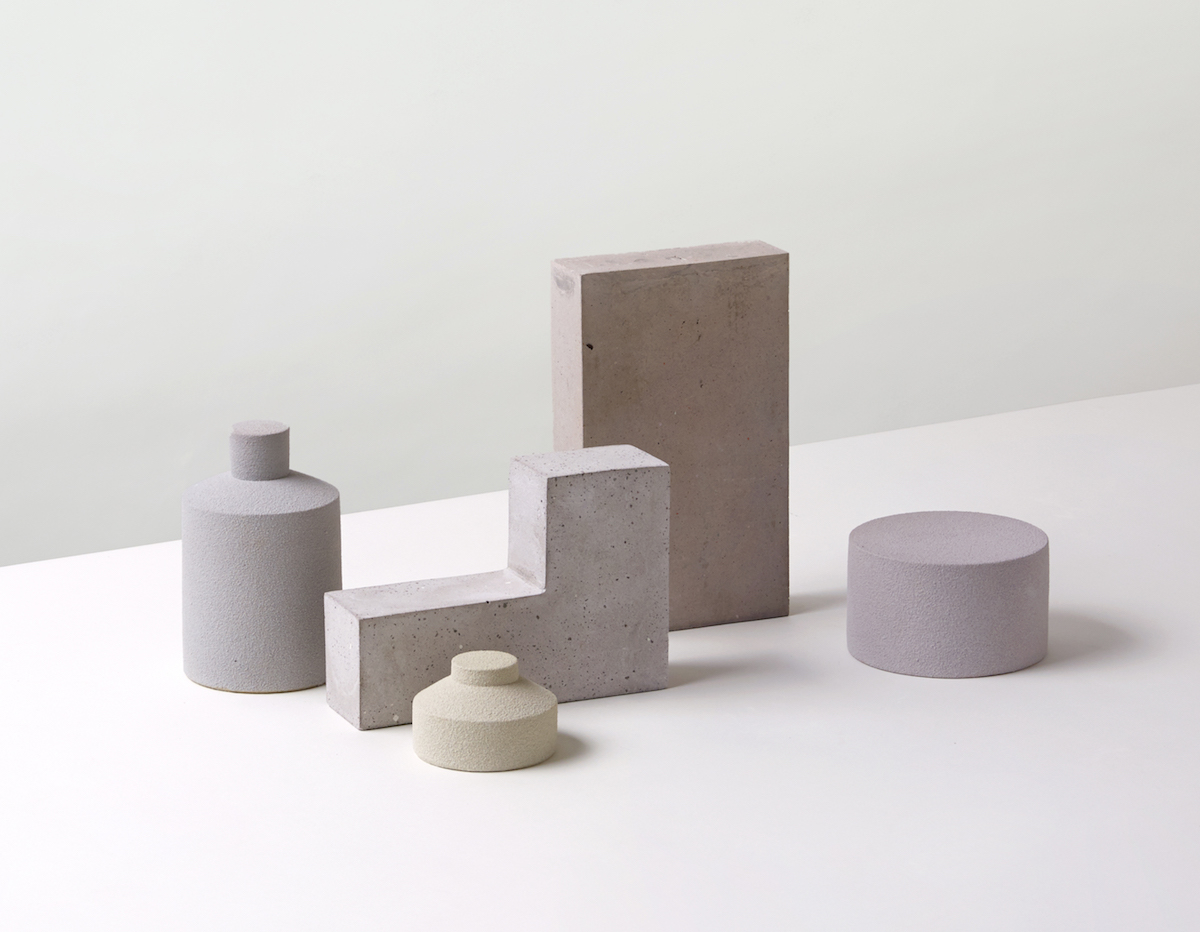
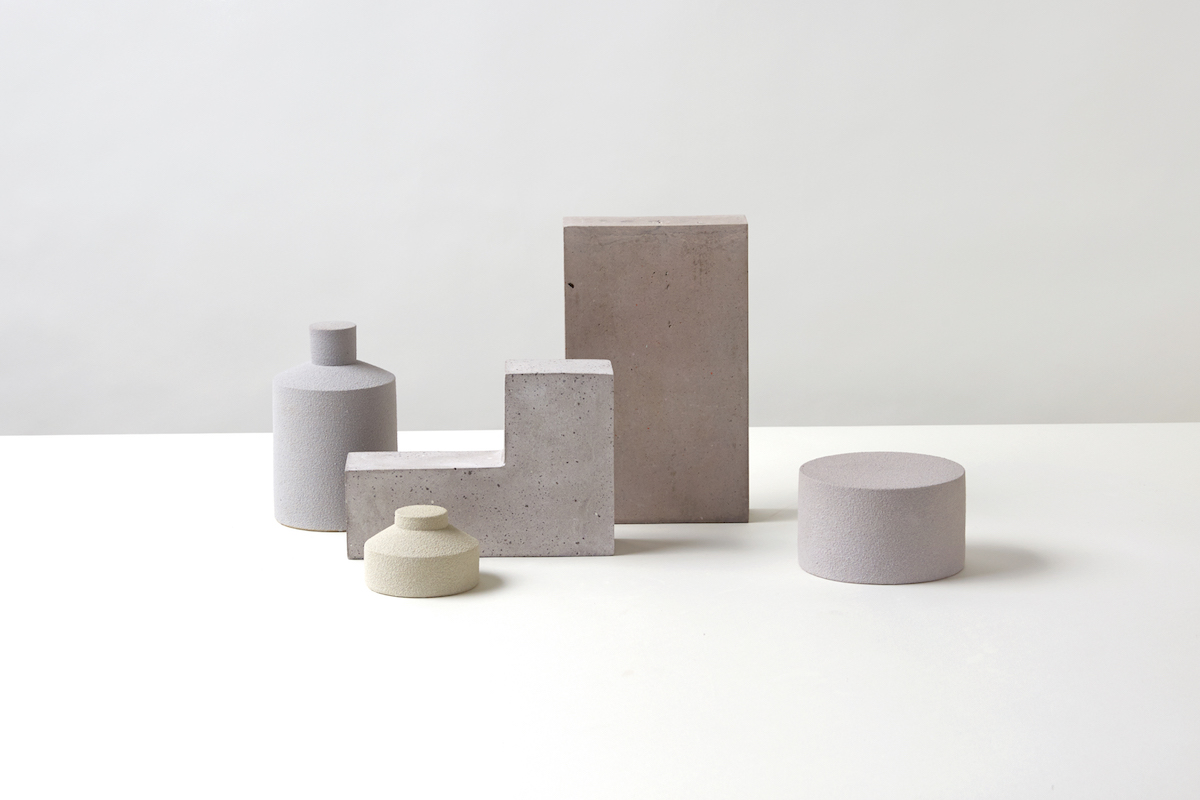
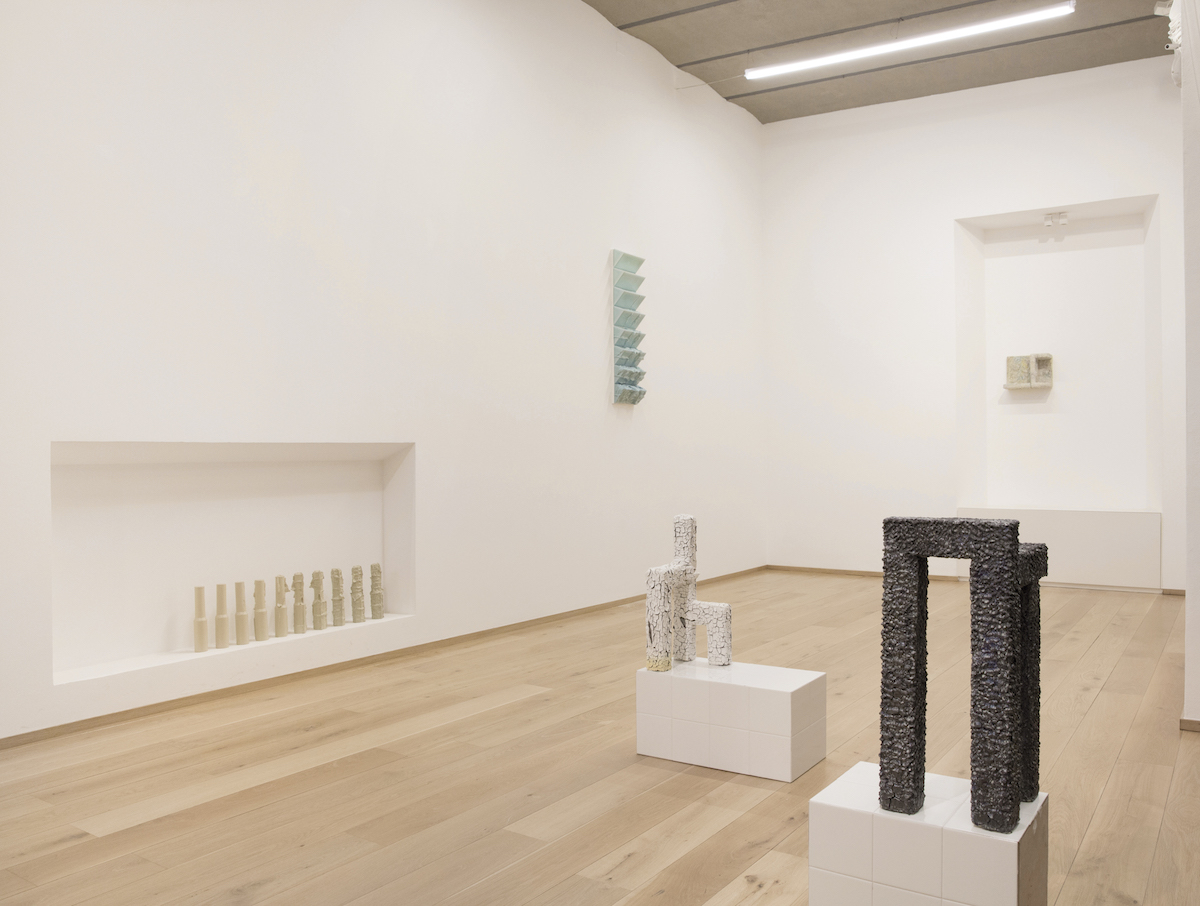
In her first solo exhibition in Milan, entitled Inner Geometry (Officine Saffi, September 26 – October 26, 2018), Irina Razumovskaya presents a body of new ceramic works that enrich her reflection on the theme of matter deterioration, as she seeks to bring out the subtle emotional ties that pervade her deliberately anti-narrative artistic practice. “I have experimented a lot with surfaces for this exhibition,” says Razumovskaya, “having painted my pieces hundreds of times with new layers of glaze to obtain the effects I wanted, in order to reproduce the ageing on the surfaces of architectural structures, evoking the feeling of layers of peeling paint or of the stone slowly crumbling”. Precisely to strengthen this conceptual link with architecture, she is experimenting with new materials such as cement.
“In the new Construct series, I have combined sandblasted ceramic shapes with rough concrete surfaces juxtaposed between them, creating a monochrome palette of grey tones. In this work, the intimate impression of an urban landscape is echoed, which changes into a tangible experience through the layering of details and nuances”.

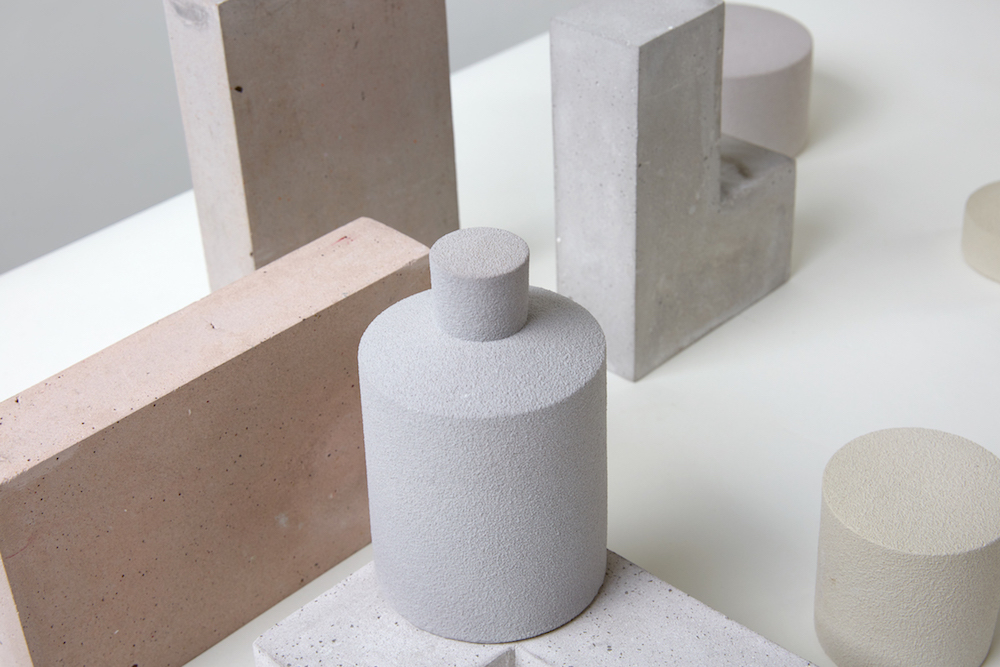
At the centre of the artist’s reflections there has always been the idea of the universality of ceramics and how this medium allows not only members of a community to relate to each other, but also individuals who are very distant in terms of geography and time.
“From the age of five, I have attended courses dedicated to the youngest children at the Hermitage Museum in St. Petersburg and one of my most vivid memories is that of a visit to the Neolithic section. As I looked at fragments of crockery from the Caucasus region, I immediately felt a connection with the creators from that ancient era. What struck me – and still strikes me today – is the inextricable union between the form of those finds, the manual process with which they were shaped and the unpredictable behaviour of clay in the fire. You can still see the fingerprints of those who had worked them, but also the shadows from the fire, the brownish colour of the clay”.
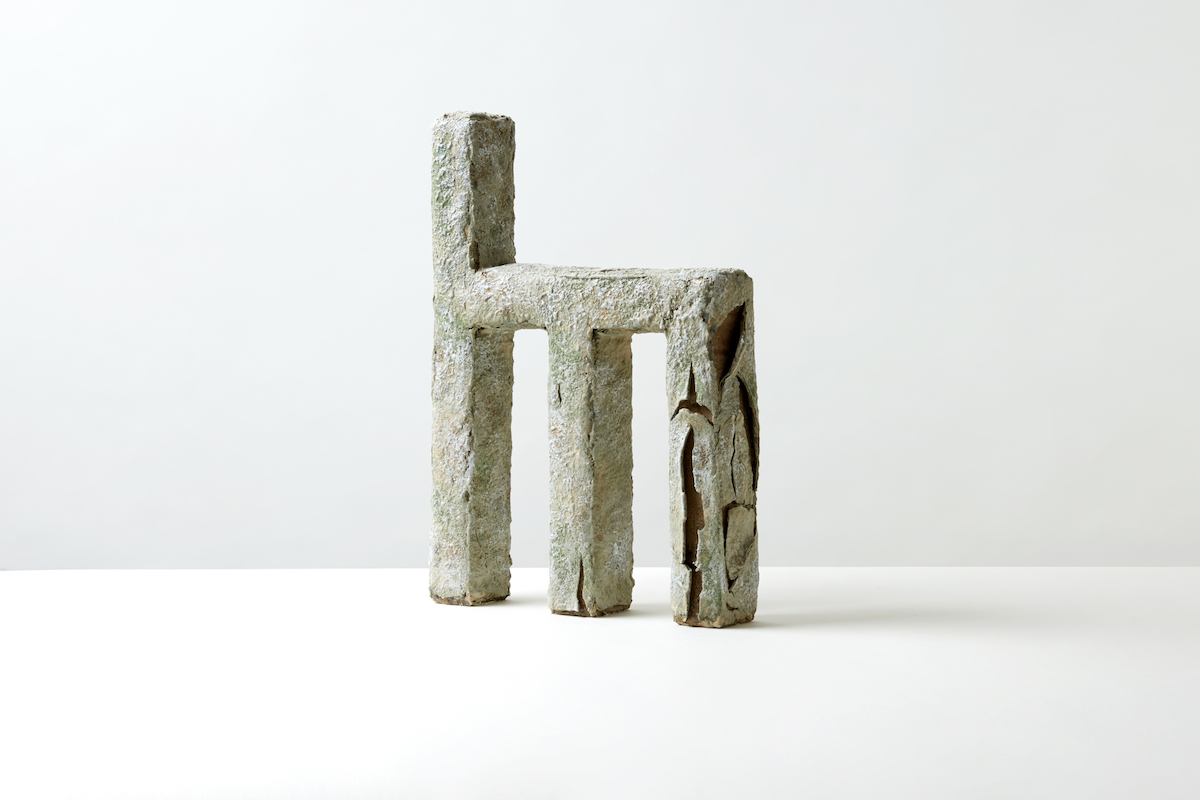
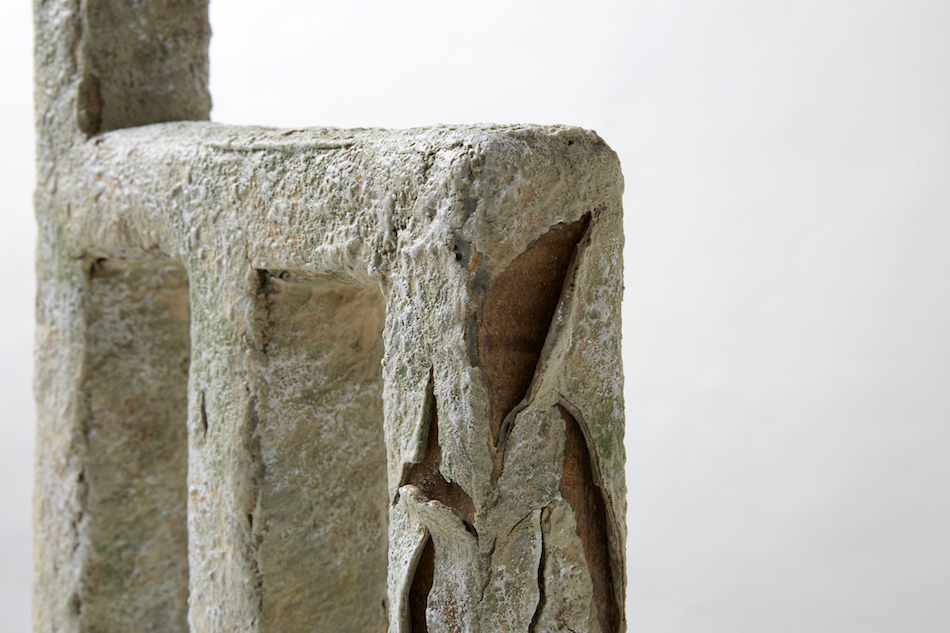

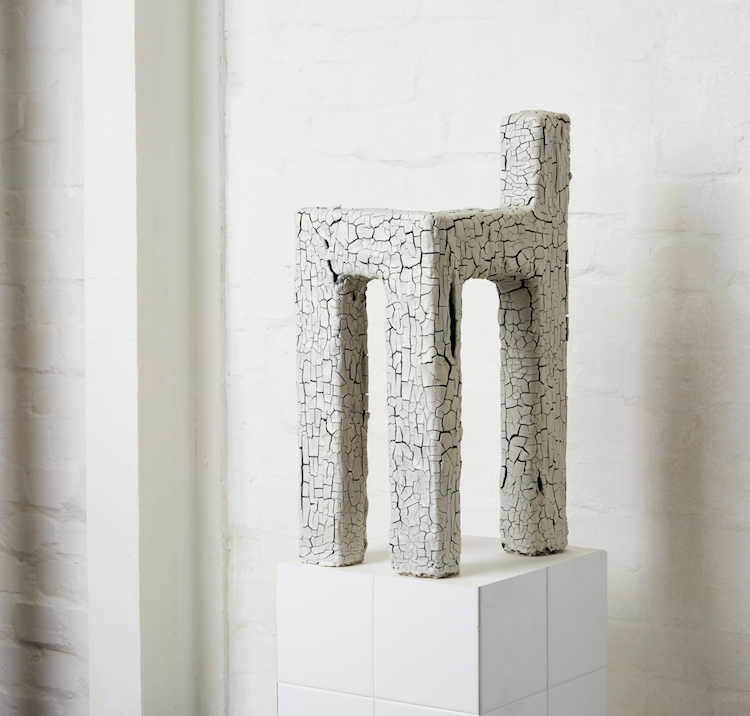
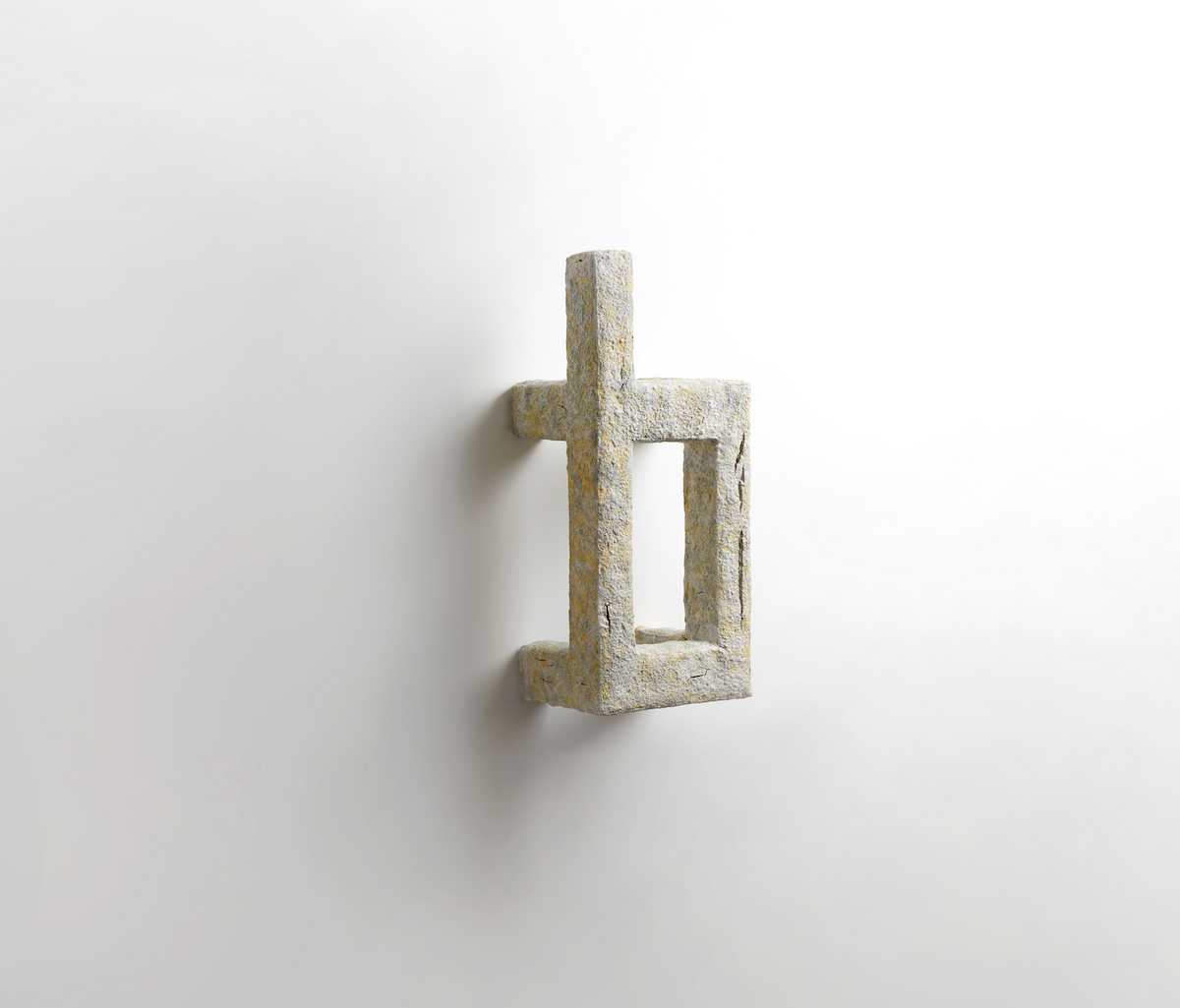
The artist’s passion for archetypal forms remains a constant source of inspiration that re-emerges in the Megalith series:
“I wanted to create an imaginary replica of ancient archaeological sites, structures that once served a very specific purpose, built with uncompromising visual rules, which have become poetic and softened by the touch of time”.
By presenting unchanged prehistoric symbols grouped together in austere forms, whose simplified images reside in the collective unconscious, the artist tries to establish a subtler form of relationship between the spectator and the work, which is intuitive and spontaneous.
“I remember the feeling of being immersed in the unique atmosphere of the archaeological sites of Rome or the Palazzo Massimo museum. Having learned the Latin language and culture during my studies, I knew the setting, I could read the texts and pick up on the function of the objects that surrounded me”.
The memory of these experiences is mirrored in her Ruin works, where classicism meets minimalism, giving rise to forms of meditation on the theme of the carpe diem and on the dichotomy between the creative and destructive impulses that animate the entire human history.
“I let myself be guided in my work by emotions and memories of impressions, but I can’t force my observer to experience them in the same way. I like to leave an open interpretation, because this is the way that I love to experience art”.
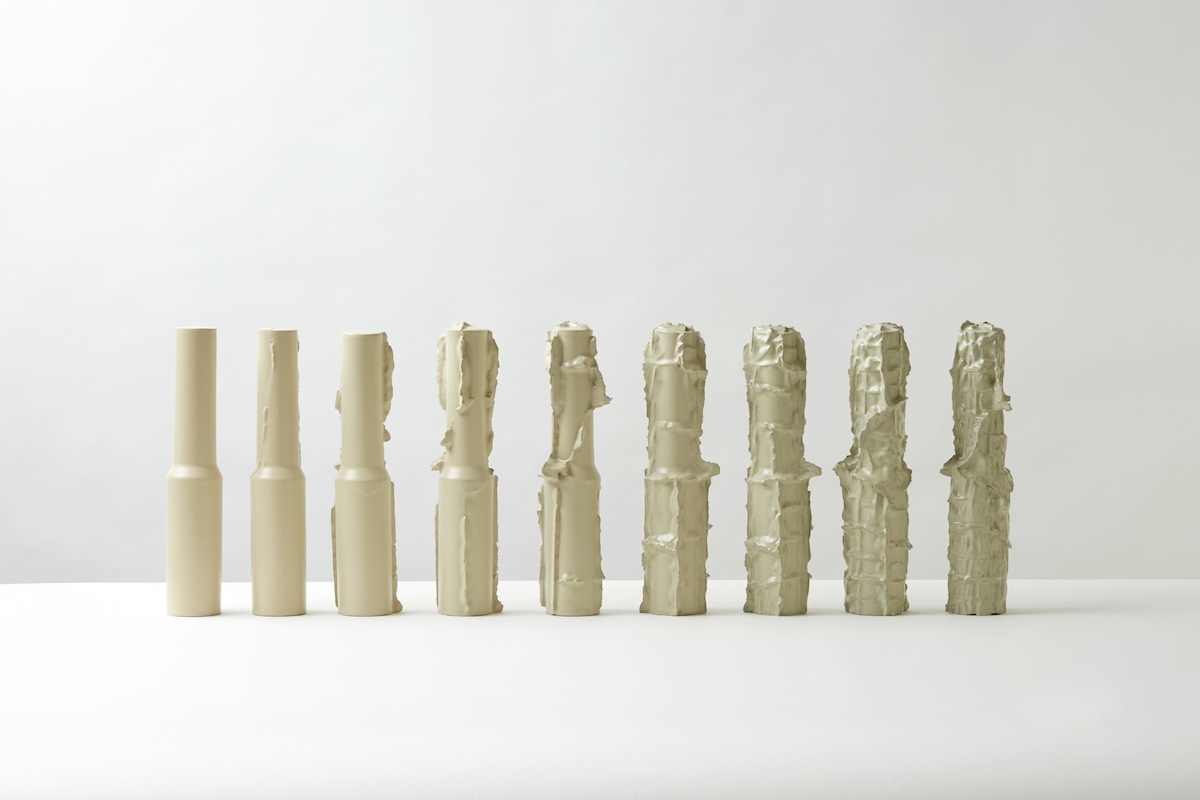
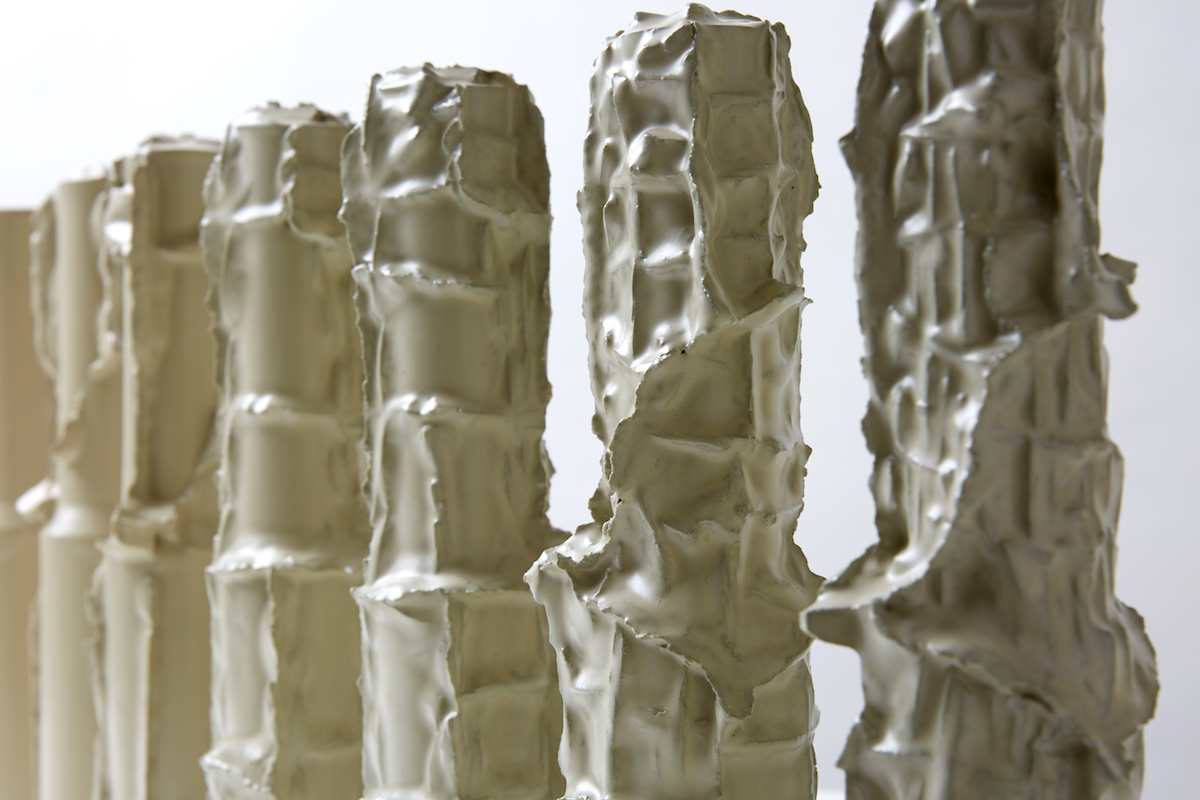
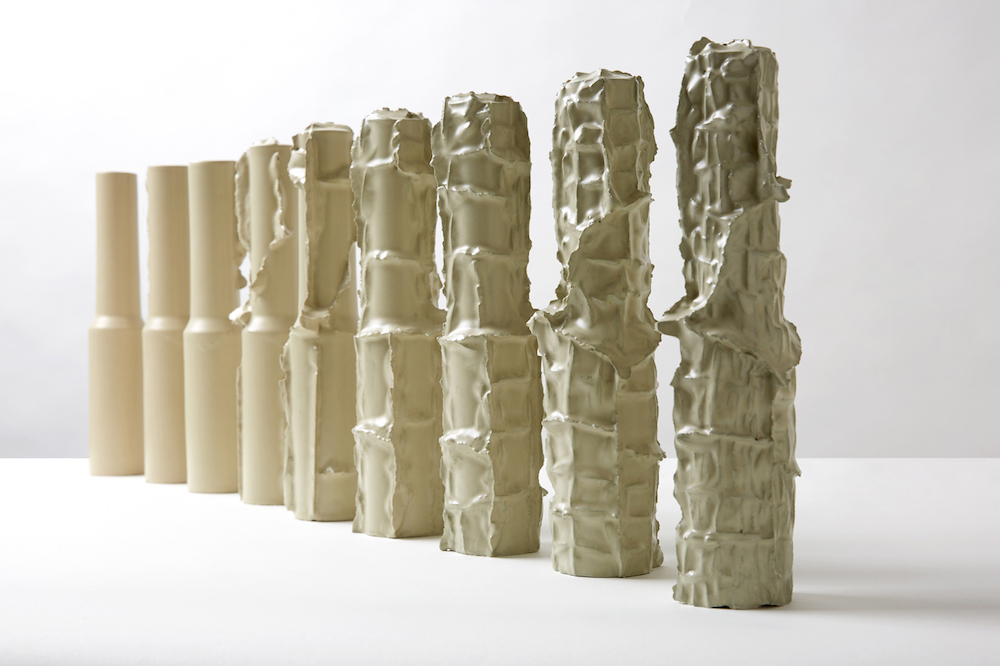
The sculptor’s passion for Italy, however, does not only stem from its age-old ruins but also from her meticulous studying of the work of more contemporary artists, such as the masters Marino Marini, Alberto Burri or Giorgio Morandi, from whom she borrows the use of dusty colours, sometimes revived by bright tones.
Even now that she is based in London, Razumovskaya finds a constant stimulus in classical culture, periodically visiting the halls of the British Museum, where she lingers on the Sumerian finds, for example. Sometimes, however, the investigating eye of the artist moves from the object to its context, from the content to the container, taking into consideration the structures and grids that form the modern temples of knowledge. She therefore borrows from museography the forms of columns for barriers, forms that occupy and mark the empty space of functional rooms.
“In Restrain, I reflect on the idea of self-control, on the fragile bonds that influence personal decisions and social rules”.
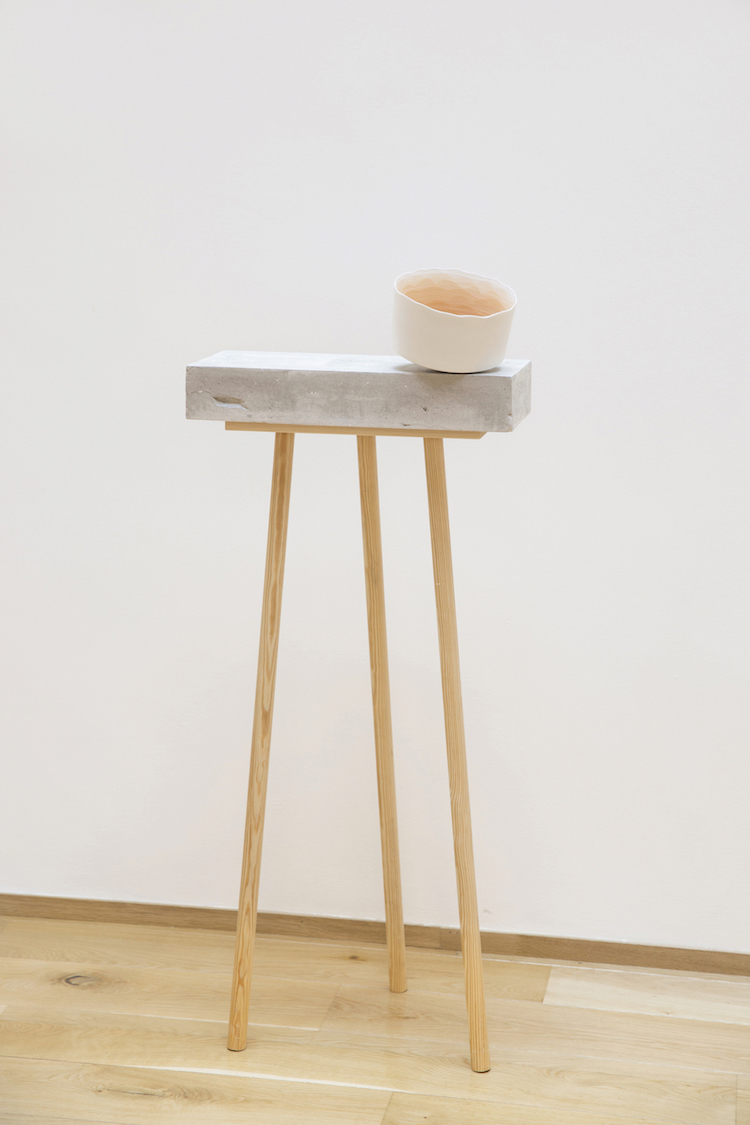
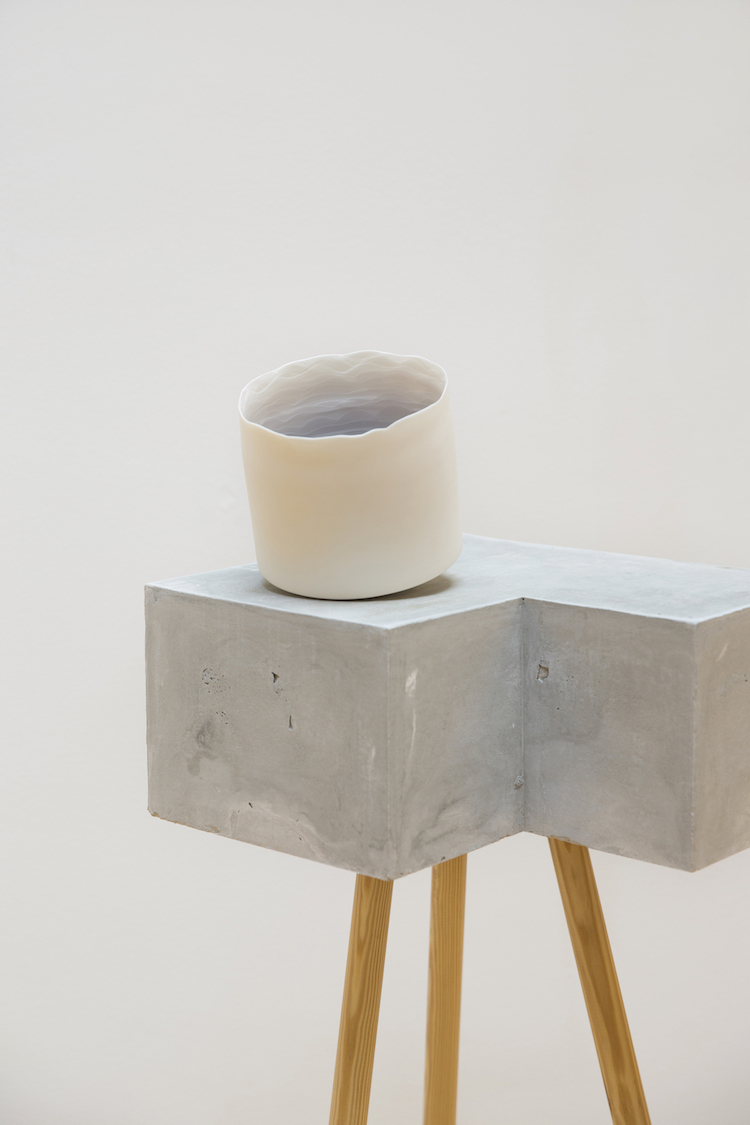
With Inner Geometry Irina Razumovskaya collects imaginary finds from contemporary oneiric ruins, built on the vision of unconscious forms and symbols. She thus reiterates her firm conviction that lyricism consists more in concealing than in unveiling, and that art finds its maximum expression “between the lines” of a poem, between the cracks in ceramics, in the mystery, in its full etymological sense of what must not – or should not – be revealed.
Curatorial essay by Fabrizio Meris.
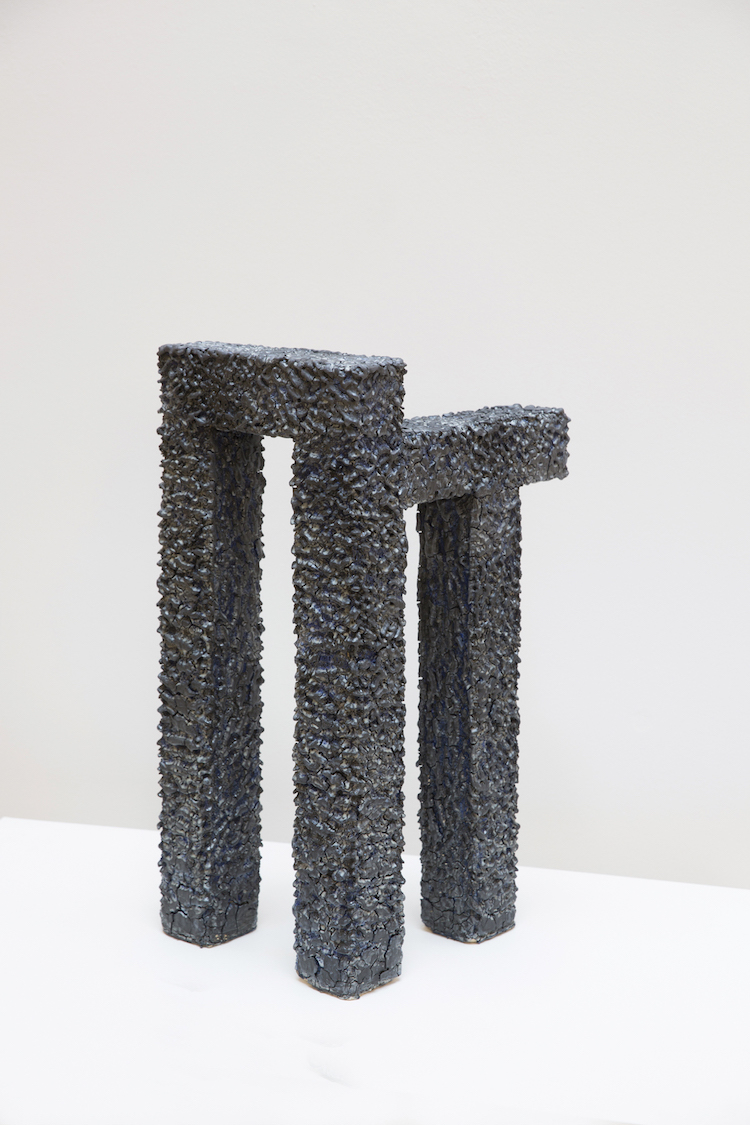
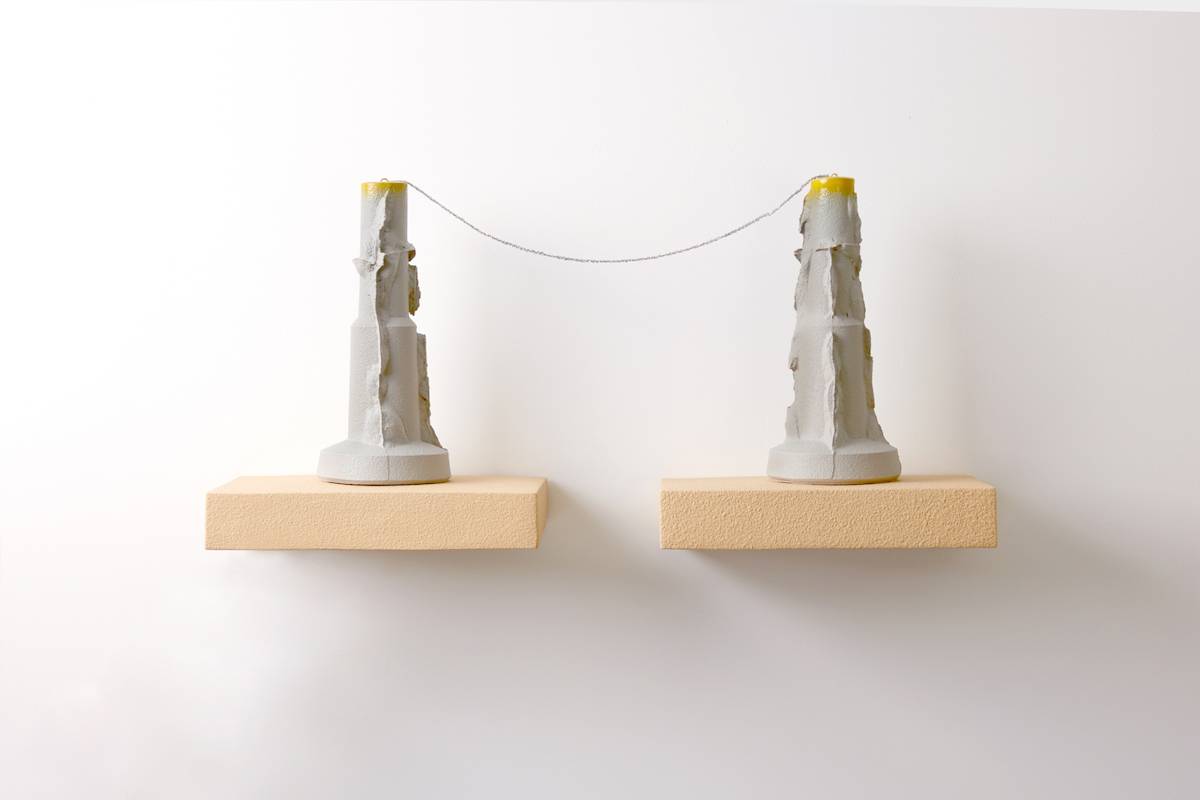
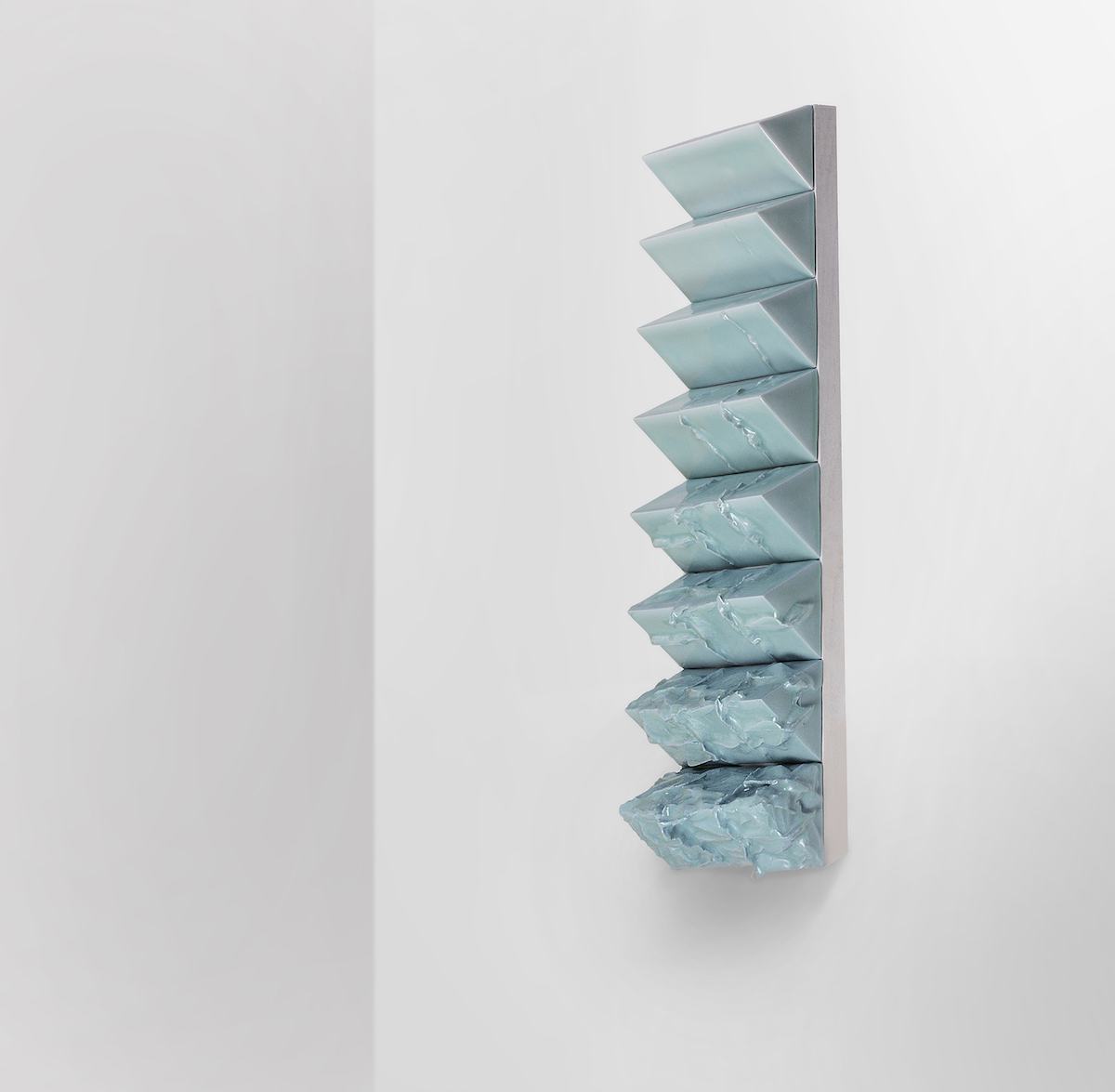
Love or loathe this exhibition from the world of contemporary ceramic art and contemporary ceramics? Share your thoughts in the comments section below for a chance to win our “Best Comment of the Month” contest. One lucky commenter will win a copy of $100 book Shifting Paradigms signed to the winner by Garth Clark and Mark Del Vecchio.
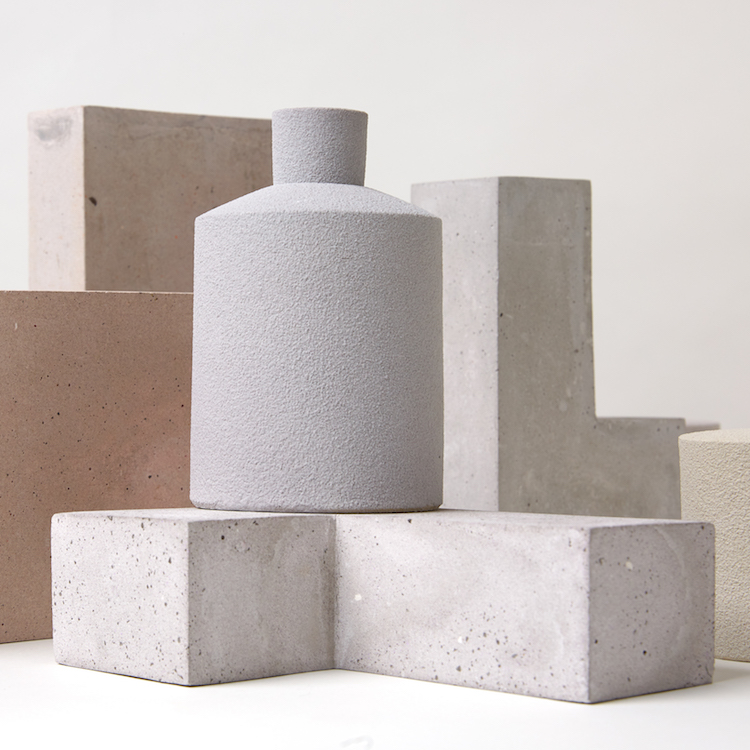
Add your valued opinion to this post.